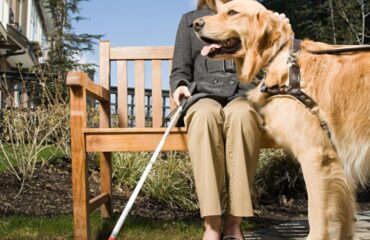
If you are thinking of traveling to Ireland with a dog and cat and don’t know where to start, this content will certainly help you understand the subject.
That’s why it’s very important that you know all the rules that are imposed so you can travel with your pet.
After all, it is essential to understand all the requirements so that you can make the move with your Pet in a quiet and hassle-free way.
For any non-compliance or irregularity can prevent the pet from reaching Irish territory.
In this way, PETFriendly Turismo has prepared this content to help you understand how to travel to Ireland with a dog and cat .
What do I need to travel to Ireland with a dog and cat?
To travel to Ireland with a dog and cat, you need to understand all the steps necessary to travel smoothly.
That is, from the documents you must provide for your animal and visits to the vet.
With that in mind, our team has put all the procedures below in chronological order:
1st – Microchip
Microchip implantation should be done in a veterinary clinic or with a trusted professional who has experience in the application.
This microchip must comply with ISO 11784 and ISO 11785 standards, otherwise it will not be recognized in Irish territory.
If you are not sure if the animal already has the microchip, an important tip is before the vet applies the chip, make an attempt to read the animal to check if it already has it.
This way, you won’t run the risk of the animal having 2 microchips, each with a number, which can prevent the pet from boarding.
This microchip works as an animal’s CPF, where you will have all the information about the animal and its guardian.
2nd – Rabies Vaccine
The rabies vaccine can only be given to the pet after the microchip has been implanted.
If the vaccine has already been made before the microchip, it must be redone, with an interval of 30 days from the previous one.
Only imported vaccines are accepted! Vaccines applied by the City Hall vaccination campaign and national vaccines are not recognized.
3rd – Rabies Serology
To perform rabies serology, blood must be drawn at least 31 days after the rabies vaccine has been administered.
Here in Brazil there are two laboratories that can carry out this serological test: TECSA in Belo Horizonte and USP (Nucleo de Pesquisa em Ava) in São Paulo.
Only these two places were accredited by the European Union to carry out this exam here in Brazilian territory.
The rabies serology result must be greater than 0.5 IU/ml, otherwise it will not be accepted.
If this happens, the vaccine must be redone, wait again for 31 days and perform a new exam.
4th – Quarantine
The pet must comply with a 90-day quarantine, and only then can it enter the CVI (International Veterinary Certificate).
This quarantine is normal life for the animal, it will be able to walk, bathe, interact with other animals, but it will not be able to leave Brazil during this period.
The start of the quarantine is on the day of the collection of the Rabies Serology (day zero 0) and from then onwards the 90-day count begins to obtain the rest of the documentation.
5th – Veterinary Health Certificate
This Certificate must be signed by the veterinarian who takes care of your dog or cat.
The document must be a maximum of 10 days in advance before you travel to Ireland with the PET.
6º – International Veterinary Certificate (CVI or CZI)
With the result of the Serology exam and all other documents in hand, the tutor must schedule the issuance of the CVI in the International Agricultural Surveillance System (Vigiagro).
Each Vigiagro has a deadline for scheduling, so it is necessary to check directly with unit that you want to issue the documentation.
7º – Application of Vermifuge and Anti Fleas
An Irish requirement for PUPPIES is the application of deworming and anti-fleas, not more than 120 hours before arrival in Ireland and not 24 hours before. (Echinococcus multilocularis – Tapeworm)
1st – Microchip
Microchip implantation should be done in a veterinary clinic or with a trusted professional who has experience in the application.
This microchip must comply with ISO 11784 and ISO 11785 standards, otherwise it will not be recognized in Irish territory.
If you are not sure if the animal already has the microchip, an important tip is before the vet applies the chip, make an attempt to read the animal to check if it already has it.
This way, you won’t run the risk of the animal having 2 microchips, each with a number, which can prevent the pet from boarding.
This microchip works as an animal’s CPF, where you will have all the information about the animal and its guardian.
2nd – Rabies Vaccine
The rabies vaccine can only be given to the pet after the microchip has been implanted.
If the vaccine has already been made before the microchip, it must be redone, with an interval of 30 days from the previous one.
Only imported vaccines are accepted! Vaccines applied by the City Hall vaccination campaign and national vaccines are not recognized.
3rd – Rabies Serology
To perform rabies serology, blood must be drawn at least 31 days after the rabies vaccine has been administered.
Here in Brazil there are two laboratories that can carry out this serological test: TECSA in Belo Horizonte and USP (Nucleo de Pesquisa em Ava) in São Paulo.
Only these two places were accredited by the European Union to carry out this exam here in Brazilian territory.
The rabies serology result must be greater than 0.5 IU/ml, otherwise it will not be accepted.
If this happens, the vaccine must be redone, wait again for 31 days and perform a new exam.
4th – Quarantine
The pet must comply with a 90-day quarantine, and only then can it enter the CVI (International Veterinary Certificate).
This quarantine is normal life for the animal, it will be able to walk, bathe, interact with other animals, but it will not be able to leave Brazil during this period.
The start of the quarantine is on the day of the collection of the Rabies Serology (day zero 0) and from then onwards the 90-day count begins to obtain the rest of the documentation.
5th – Veterinary Health Certificate
This Certificate must be signed by the veterinarian who takes care of your dog or cat.
The document must be a maximum of 10 days in advance before you travel to Ireland with the PET.
6º – International Veterinary Certificate (CVI or CZI)
With the result of the Serology exam and all other documents in hand, the tutor must schedule the issuance of the CVI in the International Agricultural Surveillance System (Vigiagro).
Each Vigiagro has a deadline for scheduling, so it is necessary to check directly with unit that you want to issue the documentation.
7º – Application of Vermifuge and Anti Fleas
An Irish requirement for PUPPIES is the application of deworming and anti-fleas, not more than 120 hours before arrival in Ireland and not 24 hours before. (Echinococcus multilocularis – Tapeworm)
This obligation does not apply to felines, but we recommend carrying out this
procedure ensuring the health and well-being of the kitten.
What documents are needed to travel to Ireland with a dog and cat?
To travel to Ireland with a dog and cat, you will need to provide documentation for the animals.
In addition, you must provide two copies of the original documents requested, such as:
Certification of microchip application;
Rabies vaccine up to date on the vaccination card;
Report with the result of the Anti-Rabic Serology, and the antibodies must be above 0.5 IU/ml;
Certificate of Health signed by the veterinarian who performed the vaccination;
Completed Animal Inspection Form completed;
Proof of shipment and Irish address;
The ideal Kennel for traveling to Ireland with a dog and cat?
Each airline establishes its rules defining the characteristics of the transport boxes (kennel) according to the species, breed, size and weight of the pet.
The main details required are that the transport is made of a resistant material, with enough ventilation space to guarantee the breathing and health of the animal during the flight.
If the animal is small and travels in the cabin, the transport box can be malleable, but always consulting the airline company to validate if the brand is accepted.
For your dog or cat to have more comfort and tranquility during the journey, it is interesting to train and adapt the pet in the transport box.
We therefore recommend that a trip involving pets be scheduled well in advance.
Remarks before traveling to Ireland with a dog and cat
However, there are some points that should be considered by those who want to travel with their dog or cat, regardless of which company they choose.
Companies require a request form for the transport of animals to be submitted. This can be taken from the company’s website and presented completed during check-in.
There is a limit of animals that are allowed per flight and, therefore, it is important to check the availability of the service before purchasing your ticket.
In addition, it is essential to check the guidelines of each company regarding some important details, such as:
Minimum age;
Position;
Features of the animal;
Species;
Race;
What is the best way to travel with a dog and cat to Ireland?
To be able to travel with your animals, it is important to be aware that they need to be in good health.
For this reason, we recommend that you carry out a general check up and that all vaccinations and health requirements are up to date.
Therefore, the best way to identify this moment is by contacting PETFriendly Turismo so that you can make your trip peaceful and worry-free.







You must be logged in to post a comment.